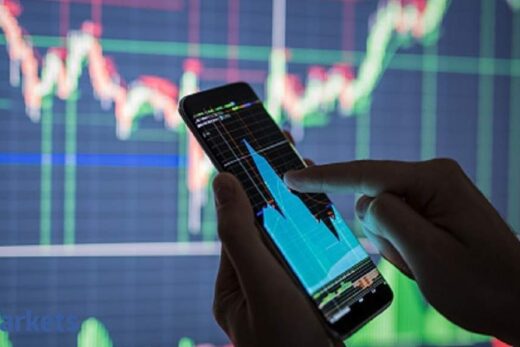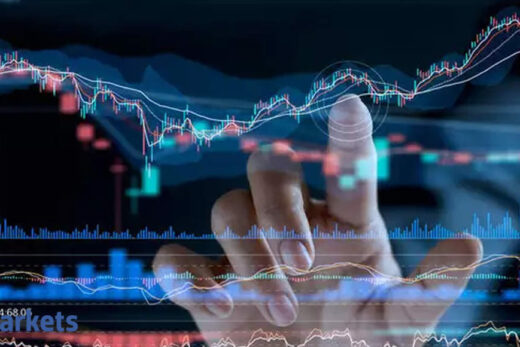And then there are some highly successful investors, who have achieved such feats but avoided the limelight and preferred to stay content in the shadows of the super-investors.
One such name is Bruce Kovner, who has generated extraordinary returns for decades, but preferred to stay away from the spotlight.
Kovner is the Founder and Chairman of Caxton Associates, a global macro hedge fund. He was a super trader, who focused on forex trade and forex futures trade. Between 1978 and 1987, he earned a yearly average rate of return of 87%. That earned him the nickname ‘the Market Wizard’ for his robotic trading style, which he developed during his early years in financial markets.
Kovner, who obtained his BA degree from Harvard University in 1966 and worked as a cab driver in his early days, is also known as one of the original commodities superstars. He retired from his hedge fund in 2011 after running it for three decades. During his successful tenure, he traded in almost everything from soybeans to Japanese yen futures and returned twice as much as the Standard & Poor’s500 Index.
Kovner mastered the art of controlling his emotions while investing and advised others to trade like machines and not let emotions get the better of them. He felt that acting robotic was a bad quality in most disciplines, but believed non-human tendencies were apt in a field where profit could be earned from being emotionless.
Kovner shared his wisdom in one of the rare interviews with Jack Schwager in the original
Market Wizards series. Let’s have a look at some of the insights he shared in that interview.
1. Research is key
Kovner said it is essential for investors to follow and research thoroughly numerous financial products such as stock, crude oil, future, forex and gold before making a decision to invest in them. “It is better to follow and research a product over a year when you want to invest a huge amount,” he said in the interview.
2. Minimise losses if there’s no clarity
If the market trend is going against what investors are expecting, then they should immediately short their positions in order to minimise losses. Kovner felt it was better to trade when investors are more confident about the market direction.
“Once in a while, I am not able to find reasons about the reverse of market trends and my prediction. I will immediately short position if the market is going in a different direction with my prediction. One discipline to remember: never bear the loss caused by the market you are unclear about,” he said.
Kovner felt investors shouldn’t mind losing money as long as the losses are the outcome of sound trading techniques, and not poor money management. “The only thing that disturbs me is poor money management. Every so often, I take a loss that is significantly too large,” he said.
3. Importance of fundamental & technical analysis
Kovner said both fundamental analysis and technical analysis can play a vital role in an investor’s success. “For me, technical analysis is like a thermometer. Fundamental analysts who say they are not going to pay any attention to the charts are like a doctor who says he’s not going to take a patient’s temperature. But of course, that would be sheer folly. If you are a responsible participant in the market, you always want to know where the market is — whether it is hot and excitable, or cold and stagnant. You want to know everything you can about the market to give you an edge,” he said.
Kovner said although some technicians attach a great deal of hype to technical analysis and claim that it predicts the future, the fact is, it can only track the past and not predict the future. “Technical analysis, I think, has a great deal that is right and a great deal that is mumbo jumbo. You have to use your own intelligence to draw conclusions about what the past activity of some traders may say about the future activity of other traders,” he said.
He said technical analysis tends to pick up unusual market behaviour as it reflects the voice of the entire market. “By definition, anything that creates a new chart pattern is something unusual. It is very important for me to study the details of price action to see if I can observe something about how everybody is voting. Studying the charts is absolutely critical, and it alerts me about the existing disequilibria and potential changes,” he said.
4.
Why stop losses are important
Kovner said investors should always set a stop loss price when they step into the market. When one does so, he would remain more relaxed and can sleep peacefully.
“Whenever I enter a position, I have a predetermined stop. That is the only way I can sleep. I know where I’m getting out before I get in. The position size on a trade is determined by the stop, and the stop is determined on a technical basis,” he said.
5. Be disciplined
Kovner said if one have the necessary vision and the will to apply that discipline against any odds, he is sure to achieve success.
Kovner, who was heavily influenced by legendary investor Michael Marcus and learnt a great deal from him, says: “Michael [Marcus] taught me one thing that was incredibly important… He showed me if you applied yourself, great things can happen. It is very easy to miss the point that you really can do it. He showed me if you take a position and use discipline, you can actually make it,” he said.
6. Look for alternative scenarios
Kovner said one of the best qualities of a trader is to imagine alternative trading scenarios. He said although most of these scenarios may turn out to be wrong, one would eventually find one scenario that would bring him clarity and lead to success.
“I try to form many different mental pictures of what the world should be like and wait for one of them to be confirmed. You keep trying them one at a time. Inevitably, most of these pictures will turn out to be wrong — that is, only a few elements of the picture may prove correct. But then, all of a sudden, you will find that in one picture, nine out of 10 elements click. That scenario then becomes your image of world reality,” he said.
7. Manage risk effectively
Kovner said investors shouldn’t get caught up in a situation in which they can incur losses for reasons they don’t understand. He said risk management is the most important thing to be well understood by investors.
Further, he advised investors to under-trade and cut their positions at least in half of whatever they think their positions ought to be. “My experience with novice traders is that they trade three to five times too big. They are taking 5 to 10 per cent risk on a trade when they should be taking 1 to 2 per cent risk,” he said.
Whenever a trader says ‘I wish,’ or ‘I hope,’ he is engaging in a destructive way of thinking because it takes the attention away from the diagnostic process. “A common mistake is to think of the market as a personal nemesis. The market, of course, is totally impersonal; it doesn’t care whether you make money or not,” he said.
8.
Maintain emotional balance while trading
On any given day, traders can lose millions of dollars so they should be wary of the emotional burden of trading. Kovner said investors should avoid taking losses personally, otherwise they won’t be able to trade efficiently. “To this day, when something happens to disturb my emotional equilibrium and my sense of what the world is like, I close out all positions related to that event,” he said.
9. Qualities of a successful trader
Kovner said successful traders are strong, independent, and contrarian in the extreme, as they are able to take positions that others are unwilling to take. He said successful traders are also disciplined enough to take the right-size positions, but a greedy one always blows out.
“Michael Marcus taught me another thing that is absolutely critical: You have to be willing to make mistakes regularly; there is nothing wrong with it. Michael taught me about making your best judgment, being wrong, making your next best judgment, being wrong, making your third best judgment, and then doubling your money,” he said.
10. How to trade in a bear market
Kovner said the principal characteristic of a bear market is very sharp down movements followed by quick retracements. So in a bear market, investors have to use sharp counter-trend rallies to enter positions.
According to Kovner, the general trading rule is: the less it is observed, the better is the trade. He felt the Heisenberg Principle in physics provides an analogy for the market, which is, if something is closely observed, the odds are, it is going to be altered in the process.
“The more a price pattern is observed by speculators, the more prone you are to have false signals. The more a market is the product of non-speculative activity, the greater the significance of technical breakouts,” he said.
Regardless of whatever strategy investors follow, be it value investing, day trading, or even selling in volatility, Kovner’s advice can help reach the next level in their investment career. The beauty is, Kovner’s market wisdom goes beyond individual trading styles and can be applied anywhere.
(Disclaimer: This article is based on Bruce Kovner’s interview with Jack Schwager published in the original Market Wizards
series.)



